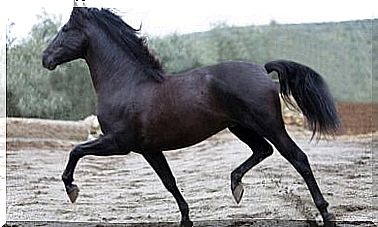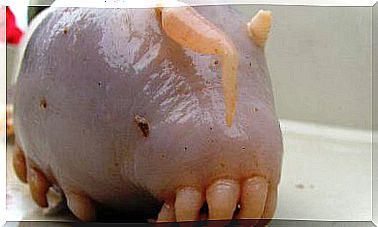5 Species Of Parrots: Come And Meet Them!
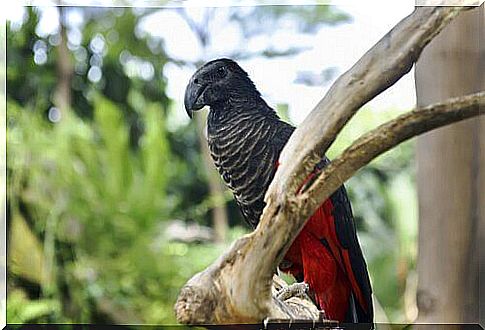
At first glance, the most striking thing about parrots is their colorful plumage and curved beaks. Furthermore, his intelligence is also impressive, as he is even able to imitate the human voice.
They are known for their ability to speak and repeat words. However, not just for that, as their colored feathers are very striking.
In this article, we are going to talk about some species of laurel that live almost all over the world.
What species of laurels are there?
Within the large Psittacoidea family there are more than 350 different species. It is one of the most numerous and widespread groups of birds in the world.
Furthermore, they can be found on four continents: America, Asia, Africa and Oceania.
All species of laurels are characterized by their curved beaks, their intelligence, their intensely colored plumage, their frugivorous diet (eating fruit) and by being monogamous for life. Some examples are:
1. Pesquet Parrot
This bird is endemic to New Guinea, specifically to the mountainous jungles. D ince ancient times, has been revered for its dark red and gray feathers.
The edges of its eyes are reddish, its head is small and it has a profile similar to that of a vulture or eagle, hence the name.
Pesquet’s parrot (picture that opens this article) feeds only on fig seeds, flowers and nectar. Not much is known about their reproductive habits.
Each season, the female lays between two and three eggs in a nest made inside a tree.
When forming lifelong partners, it can also be seen in groups of up to 20 similar flying with fast movements and short gliders.
2. Colorful parrot
This parrot is native to Oceania – Australia and Tasmania – and was introduced to New Zealand.
The plumage is really striking and colorful, more intense in males. Its head and chest are red, the neck is white, the belly is yellow and green. Also, the wings are multicolored and the tail is green, red and blue.
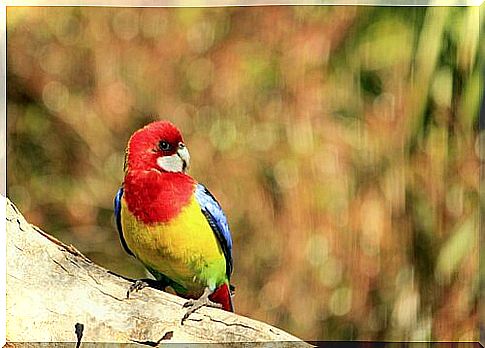
The colored blonde measures about 30 centimeters, has a clear beak, brown eyes and feeds on fruits and herbs.
The mating season is between spring and summer and it nests in trees. Each stew (the eggs are white and shiny) is formed by an average of six eggs.
3. Galician blonde
It is one of the most representative species of laurels in terms of plumage, as the predominant color is lime green.
In addition, it has a red spot on top of the beak – which is gray – and two yellow spots on the sides. The rim of the eyes is white, as are the legs.
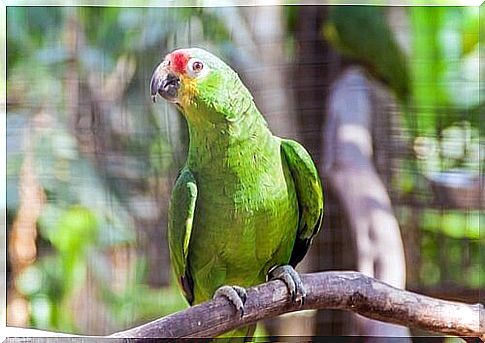
The Galician laurel lives in the tropical regions of America, between Mexico and Brazil. It can measure about 35 centimeters and weigh a little less than a pound.
There are no gender differences, although there are age differences: puppies have less ruddy faces.
As far as reproduction is concerned, they nest in tree cavities, lay about four white eggs and incubate them for nearly a month.
In addition, the chicks stay in their parents’ nests for three months.
4. Rainbow laurel
Without a doubt, it is one of the most impressive and colorful species of parrots that exist. That is the rainbow laurel!
This bird lives on several islands in Oceania and off the coasts of Australia. Furthermore, although it adapts to all types of habitats, it prefers tropical forests, wooded areas or coastal forests.
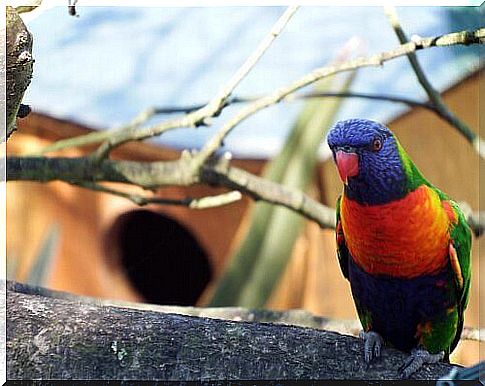
This frugivorous species, about 30 centimeters tall, has a blue head and belly, orange chest, green wings and back, yellow tail, red beak and eyes, and gray legs.
It nests in tree cavities and lays two eggs per season, which are incubated for a month.
5. Gray blonde
The last of the laurels on this list lives in central Africa and has three subspecies, one of which is widely adopted as a pet.
The feathers are almost entirely gray (different shades), however the tail is red. Also, its face is whitish, with a black beak.
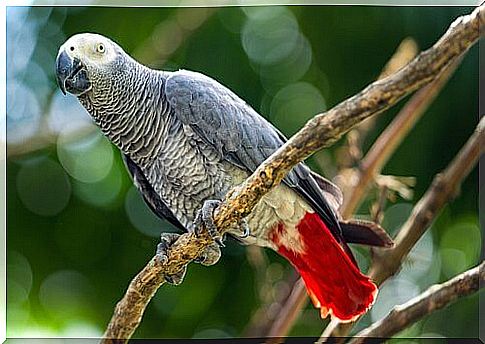
This blonde lives in bands organized by a hierarchy and creates lasting bonds with stable partners .
Like other laurel species, it builds nests in tree cavities. He lays three white eggs and incubates them for a month. In addition, puppies are no longer cared for by their parents after three months.



